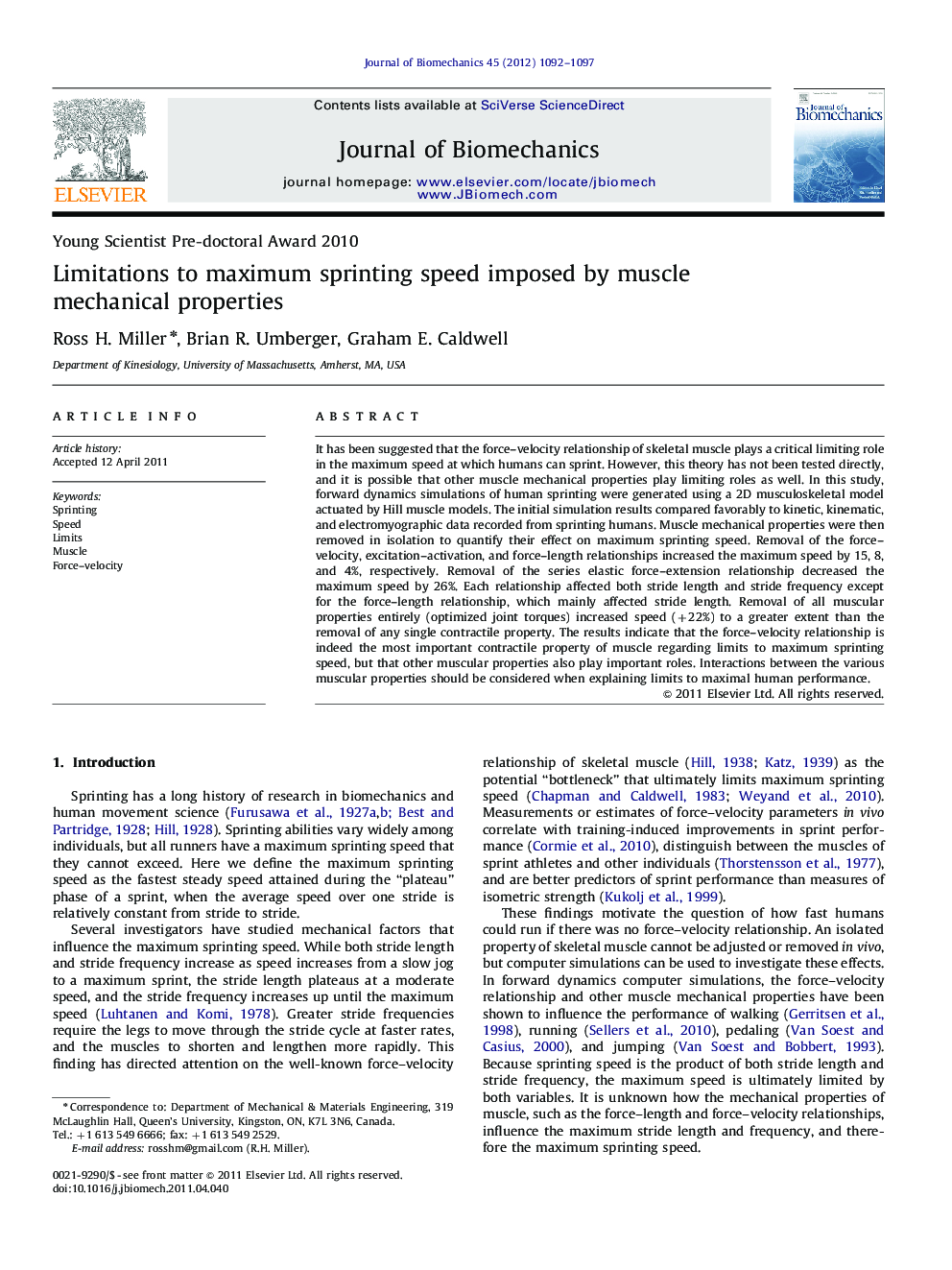| Article ID | Journal | Published Year | Pages | File Type |
|---|---|---|---|---|
| 10433182 | Journal of Biomechanics | 2012 | 6 Pages |
Abstract
It has been suggested that the force-velocity relationship of skeletal muscle plays a critical limiting role in the maximum speed at which humans can sprint. However, this theory has not been tested directly, and it is possible that other muscle mechanical properties play limiting roles as well. In this study, forward dynamics simulations of human sprinting were generated using a 2D musculoskeletal model actuated by Hill muscle models. The initial simulation results compared favorably to kinetic, kinematic, and electromyographic data recorded from sprinting humans. Muscle mechanical properties were then removed in isolation to quantify their effect on maximum sprinting speed. Removal of the force-velocity, excitation-activation, and force-length relationships increased the maximum speed by 15, 8, and 4%, respectively. Removal of the series elastic force-extension relationship decreased the maximum speed by 26%. Each relationship affected both stride length and stride frequency except for the force-length relationship, which mainly affected stride length. Removal of all muscular properties entirely (optimized joint torques) increased speed (+22%) to a greater extent than the removal of any single contractile property. The results indicate that the force-velocity relationship is indeed the most important contractile property of muscle regarding limits to maximum sprinting speed, but that other muscular properties also play important roles. Interactions between the various muscular properties should be considered when explaining limits to maximal human performance.
Related Topics
Physical Sciences and Engineering
Engineering
Biomedical Engineering
Authors
Ross H. Miller, Brian R. Umberger, Graham E. Caldwell,
